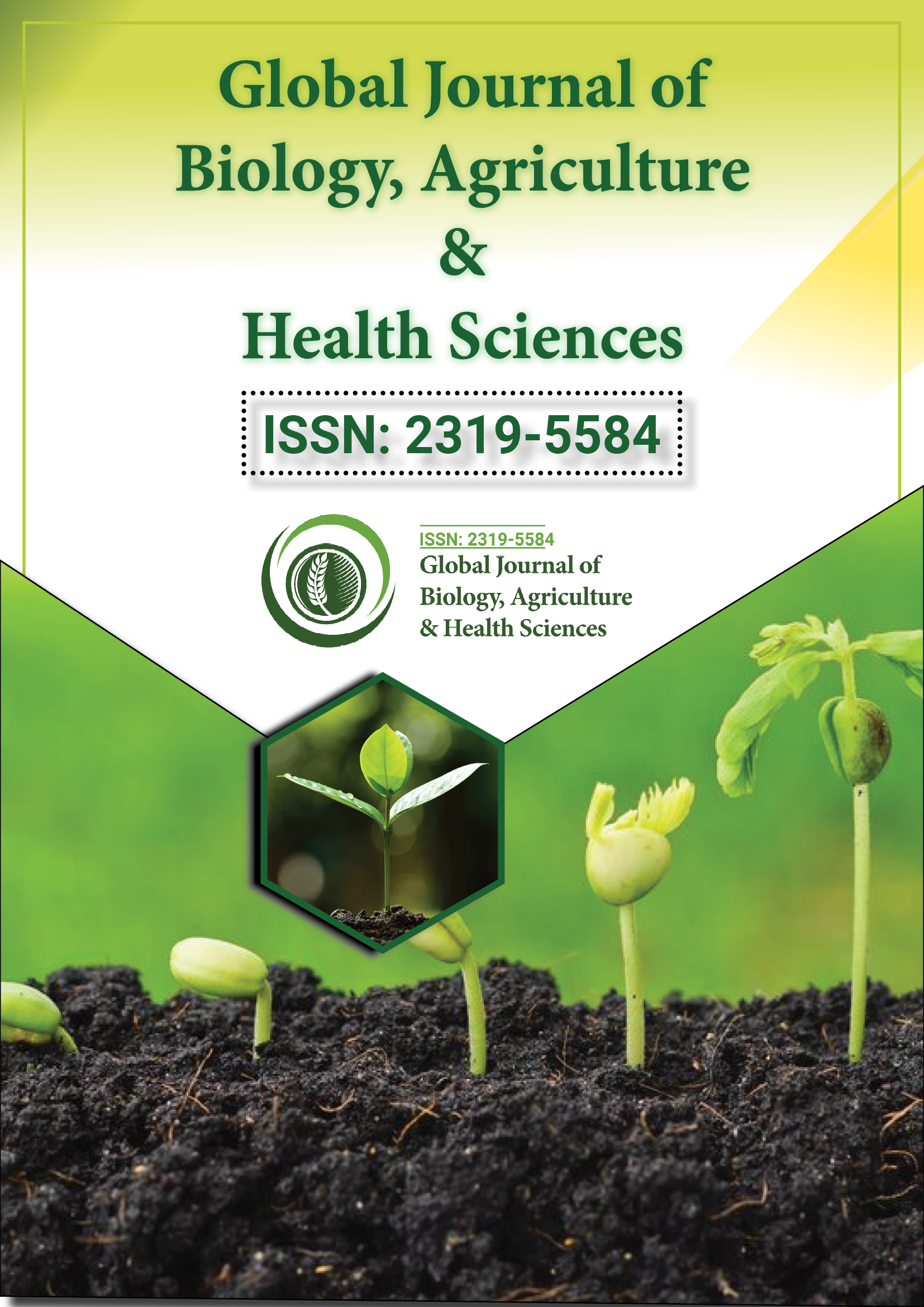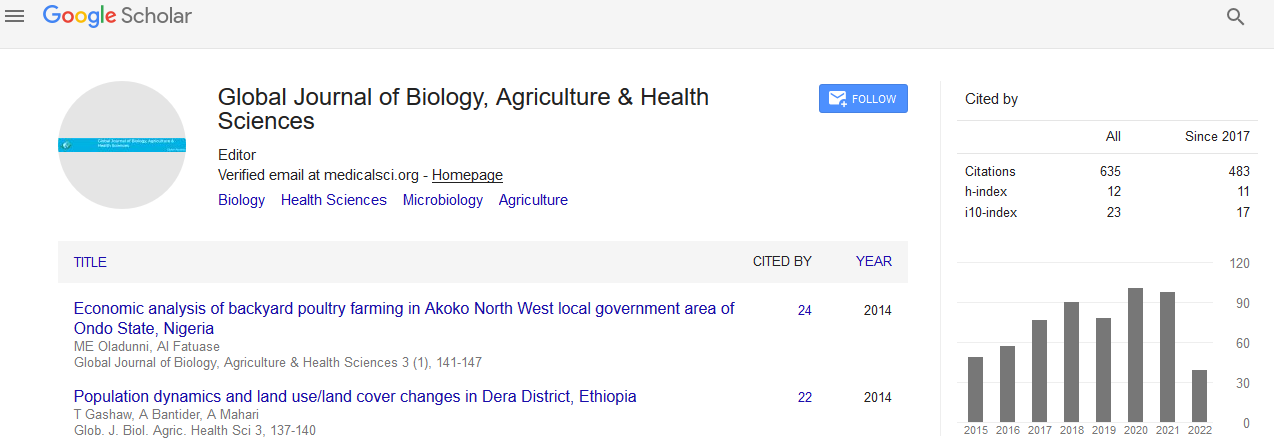Indexed In
- Euro Pub
- Google Scholar
Useful Links
Share This Page
Journal Flyer

Open Access Journals
- Agri and Aquaculture
- Biochemistry
- Bioinformatics & Systems Biology
- Business & Management
- Chemistry
- Clinical Sciences
- Engineering
- Food & Nutrition
- General Science
- Genetics & Molecular Biology
- Immunology & Microbiology
- Medical Sciences
- Neuroscience & Psychology
- Nursing & Health Care
- Pharmaceutical Sciences
Abstract
Analysis of Dietary Diversity of Food Consumption Pattern in Oyo State
Mustapha IO
The producer of most varieties of staple food are found in rural areas and are mostly subsistence/smallholder farmers who most often consumed leftover on their farm after selling food product from their farms. The study examined the socio-economic and dietary diversity of food consumption in Oyo State. Multi-staged random sampling technique was employed to select eleven Local Government Areas from thirty three existing one and five households from each of the eight villages from every LGA in selection. 440 respondents now constitute the sample for the study. Results reveal that the mean age of the respondents was 52.01 and male constitutes the majority of the respondents. About 80% were married while the mean household size was 10. In the dietary diversity, food such as yam, with mean value of 0.091, maize (0.97), plantain (0.73), millet (0.055) and rice were mostly consumed. Other foods with high diversity are fish (0.095), bush meat (0.093), chicken (0.90), snail (0.80), beef (0.80), legume (0.87) and goat meat (0.77) showed high consumption rate. Correlation result revealed that year of residence (r = 0.128; ≤ 0.01) had significant relationship with diet diversity. Age and residence (r = 0.344 ≤ 0.01) had positive and significant contribution to one another. It is concluded that wide variety of food have a high diversity, years of residence determines food consumption pattern and the more the age of respondents, the more the year of their residence. It is recommended that traditional food system should be enhanced in such a way that important nutrients are retained during the food preparation process.
Published Date: 2014-10-06;

